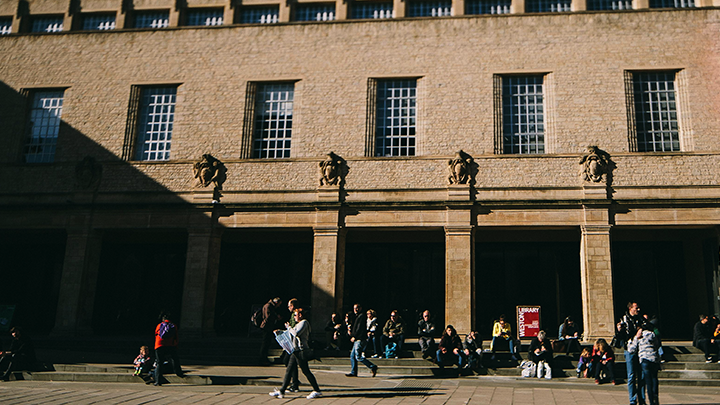Here we're sharing the different types of floor care treatments and the schedule to complete them.
By the end of this article, you'll know exactly how to get your building to shine.
Varnish
For wood flooring, you will want to varnish once a year. It's a highly effective and cost-efficient way to prolong the life of your flooring.
Varnish is a hard protective coating, typically made from natural products such as oil and resin. Facilities can use it to protect wood flooring and other types of surface coverings. Varnishes create a barrier between the floor and shoes or furniture that might cause scratches, scuffs, and marks.
Varnish Tips:
1. Varnish Types: There are three types of varnish: solvent-based, water-based, and hybrid varnish. Water-based varnish is the most effective at preventing surface floor damage. Water-based varnish coats the surface, keeping dirt and dust from penetrating the wood. Additionally, it's abrasion-resistant, protecting the wood from scratches, and has a high-gloss finish, making it easier to spot dirt or dust and remove it before it seeps into the wood.
2. Environment: Is the building humid? Does it hold chemicals? These elements will affect which varnish you choose. You don't want to choose a varnish that erodes with the chemicals used in the building or becomes slippery when the room is humid.
3. Prep: Be sure to clean and repair your floors before varnishing them. To get the best result, no dust or dirt should be on the floor when varnished. And this is an excellent time to repair that chip so that the damaged area blends in a bit better.
Strip and Wax
When caring for your facility’s floors, it is vital to maintain them regularly. Stripping is one of the most common ways to rejuvenate floors. It is also one of the most aggressive treatments because it removes layers of built-up grime and dirt.
After staff strips the floor of all build-up, it is sealed, waxed, and polished again.
Strip and Wax Tips:
1. Prepare: Prepare the floors for this treatment by cleaning them thoroughly, paying particular attention to seams, cracks, and imperfections.
2. Not Too Often: This type of maintenance should be reserved for when floors are beyond light treatment and need a fresh start.
3. Traffic: When choosing a schedule for stripping and waxing your floors, consider the traffic of each area in your facility. For example, some spaces may get hardly any foot traffic, while others have high heels, commuter traffic, or scratching furniture damaging it daily.
Carpet Care
To extend your carpet’s life, you need to understand how the carpet blend and what type of care it needs. Carpet has a mix of fibers that includes nylon, polyester, and cotton. Knowing the care your carpet needs will help you make solid maintenance decisions moving forward.
Carpet Care Tips:
1. Asthma and Allergies: Carpet is one of the primary sources of indoor allergens. Dander, dust mites, pollen, and mold spores are irritants that live in carpets. Regular cleanings will reduce allergens in the air.
2. Daily Vacuuming. Did you know that vacuuming can remove 85% of dirt from the carpet through vacuuming? By performing this task regularly, dirt and allergens don't get deeply embedded into the fibers and are easier to remove.
3. Quick Response: When a spill, stain, or soiling occurs, staff should treat it as soon as possible not to become permanent.
4. Shampooing: Complete a deep clean of carpet regularly to keep stains and allergens at bay.
Checklist of Floor Care Frequency
With regular maintenance, your floors will have a long life ahead of them. Therefore, we recommend the following schedule for your floor treatments.
Varnish: Every three years, schedule a fresh varnish.
Strip and Wax: For high traffic areas, schedule a strip and wax two times a year.
Carpet Care: Vacuum daily, and shampoo approximately once a quarter, if not more often.
By following this guidance, you'll prolong the life of your flooring, saving your operation from a big-budget floor replacement.









